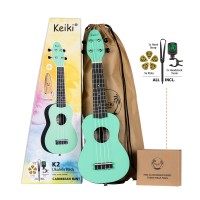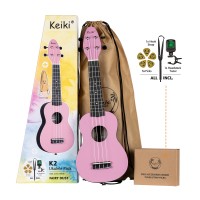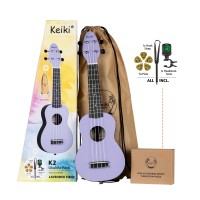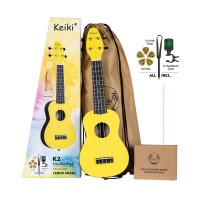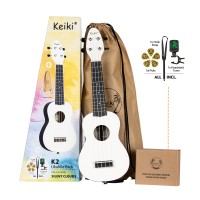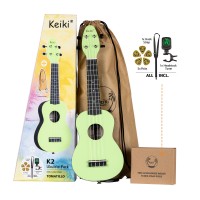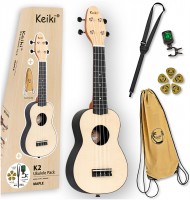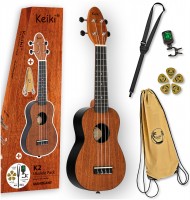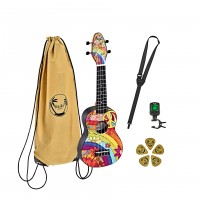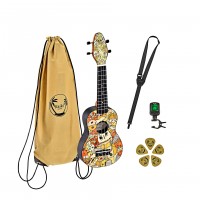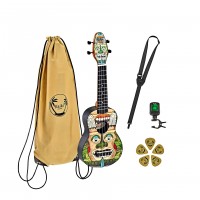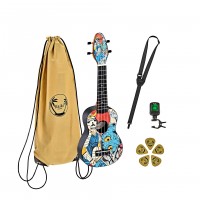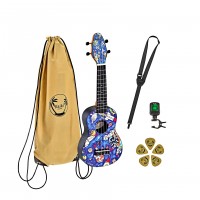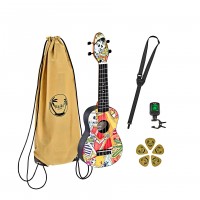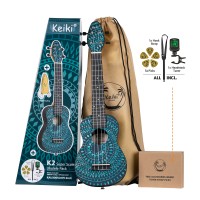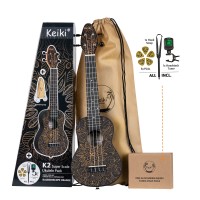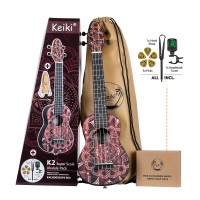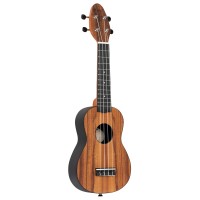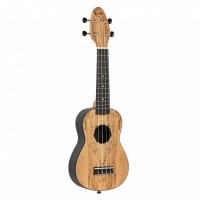BASIC UKULELE CHORDS
FOR BEGINNERS
If you have always wanted to learn to play music, the ukulele is an excellent instrument to start with. Its small size makes it a convenient instrument to take with you and make music on the go. Thanks to its four strings, learning chords is much easier. You will be able to play your favorite tunes almost immediately. In this article, Ortega Guitars has defined the most basic beginner ukulele chords to learn so you can start right away.
Ukulele chord charts
Ukulele chord charts display four vertical lines, each representing a ukulele string. The ukulele’s topmost string is represented by the first vertical line. Assume you are staring at the fretboard of a ukulele with the headstock on top.
The horizontal lines on the ukulele neck signify the frets. The top horizontal line is thicker to represent the nut of the ukulele. It is the part of the instrument, where the strings come in contact on their way to the headstock and tuners.
Read chord charts: Here is how
Circles
On the chord charts, you can also find circles on the lines. If the string has a dot on it, this means it should be pressed down to the fretboard with a finger. Pressing down the strings is also called fretting. Some chords may have an empty circle at the top of some strings, indicating that they should be played without fretting.
Numbers
Chord charts additionally include numbers inside the dots to indicate which finger should be used. The index finger is represented by 1, the middle finger is represented by 2, the ring finger is represented by 3, and the pinky finger is represented by 4.
Solid line
A solid line going across a fret from the initial note of a chord to its last note indicates barre chords, which are chords that are fretted with one finger at a time. The barre chord goes over all four strings of the ukulele and is played with only one finger, as already mentioned.
Minor chords
For minor chords, the lowercase m is shown on the chord chart. For example, the chord Am is in the key of A minor. All other chords without the lowercase m are major chords.
The I–V–vi–IV progression
I–V–vi–IV is a frequent chord progression seen in a variety of musical genres. It consists of the I, V, vi, and IV chords of any musical scale. In the key of C major, this sequence is C–G–Am–F. With these four chords, you can play an innumerable number of popular songs.
Ortega Guitars and Meinlshop wish you a lot of fun while learning and trying out!
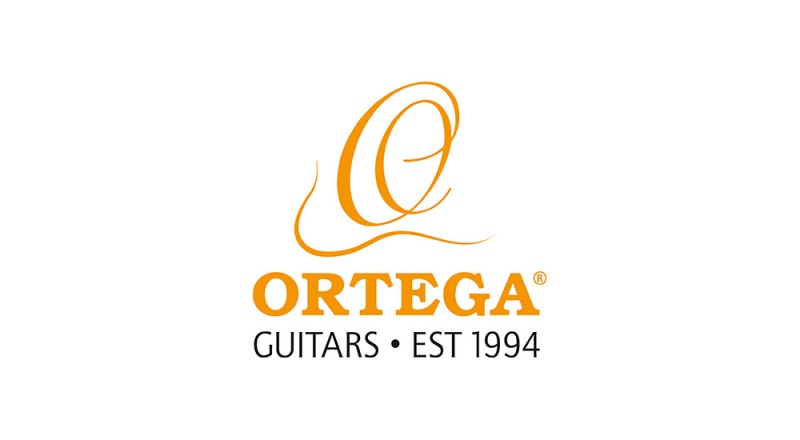
Established in 1994, Ortega Guitars introduced German design to authentic and traditional methods of guitar making. Committed to innovation and quality, Ortega strives to improve what is expected at every level of all their acoustic instruments.
Options like the 12hole bridge, often found only on high-end guitars, are standard on Ortega entry level to professional nylon string guitars. Their wide variety of body an neck sizes accomodates all ages giving everyone an opportunity to learn and play. In addition, they have released one of the widest selection of instruments specifically designed for the wide variety of left-handed players in 2020.
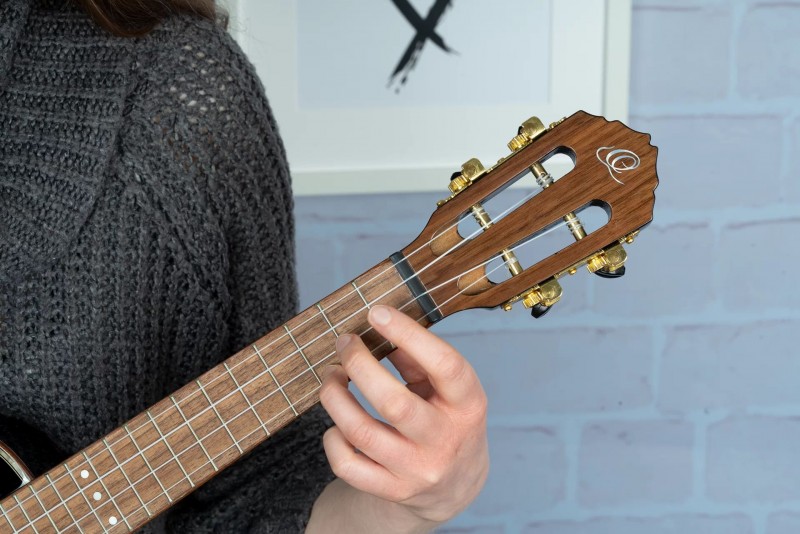
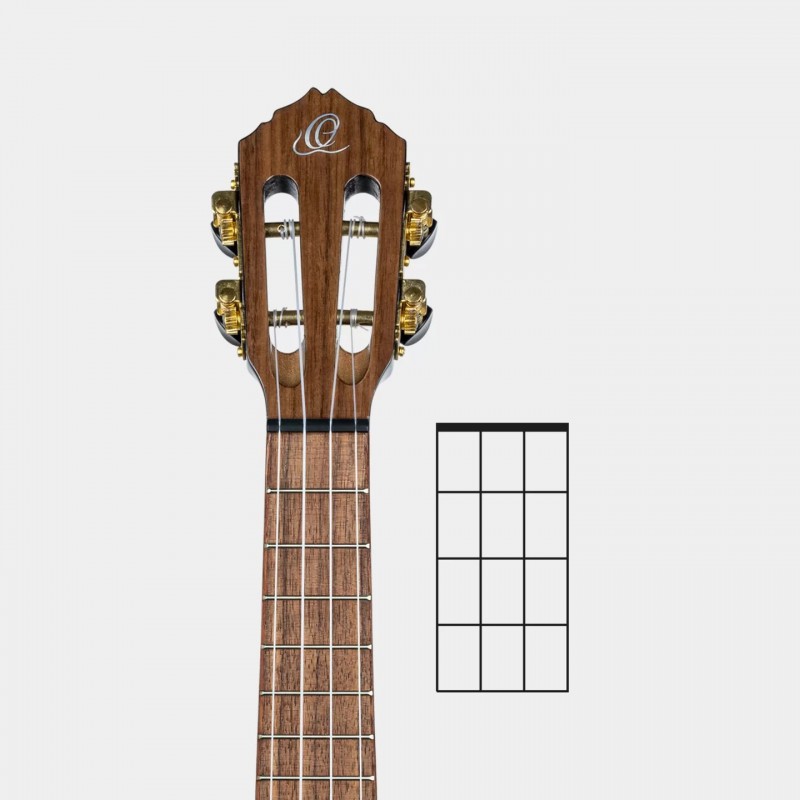
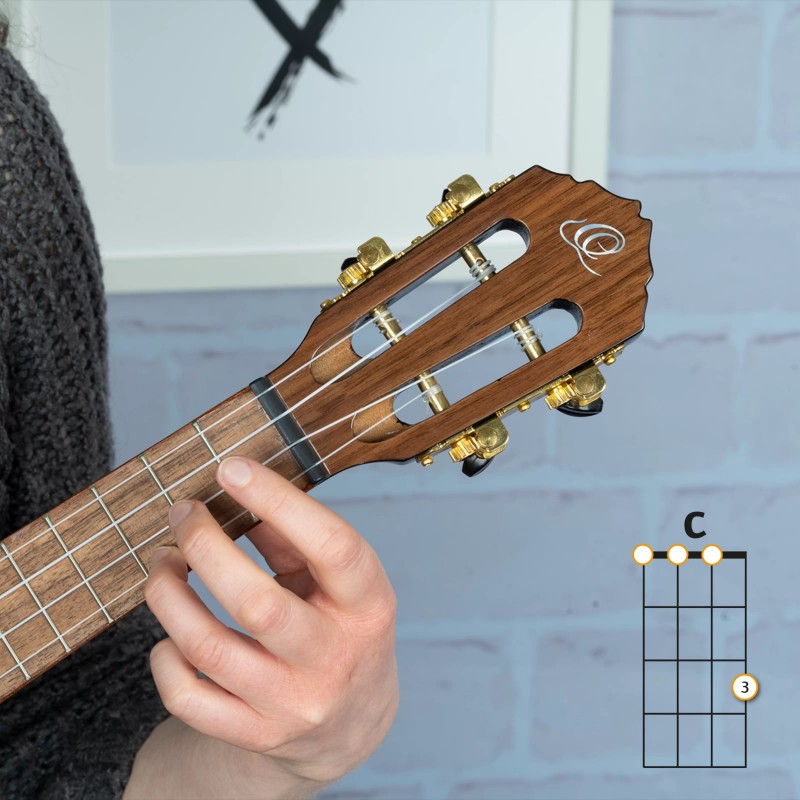
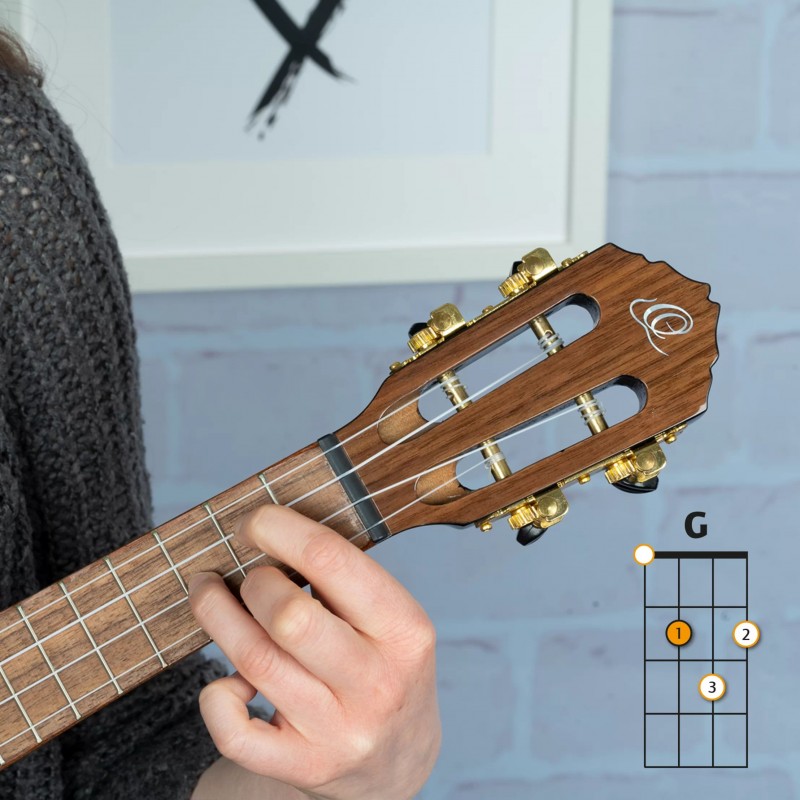
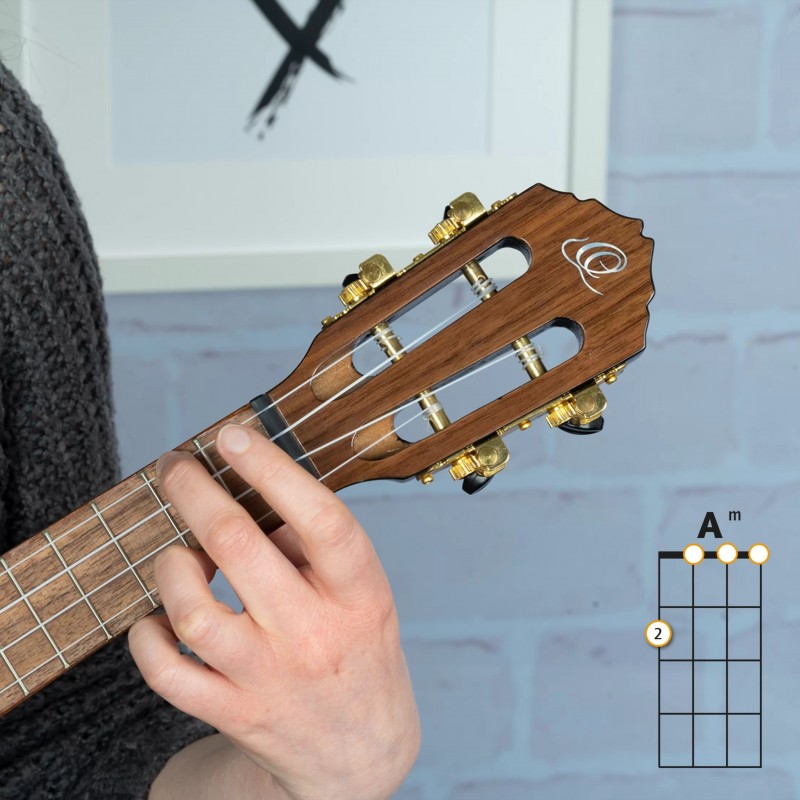
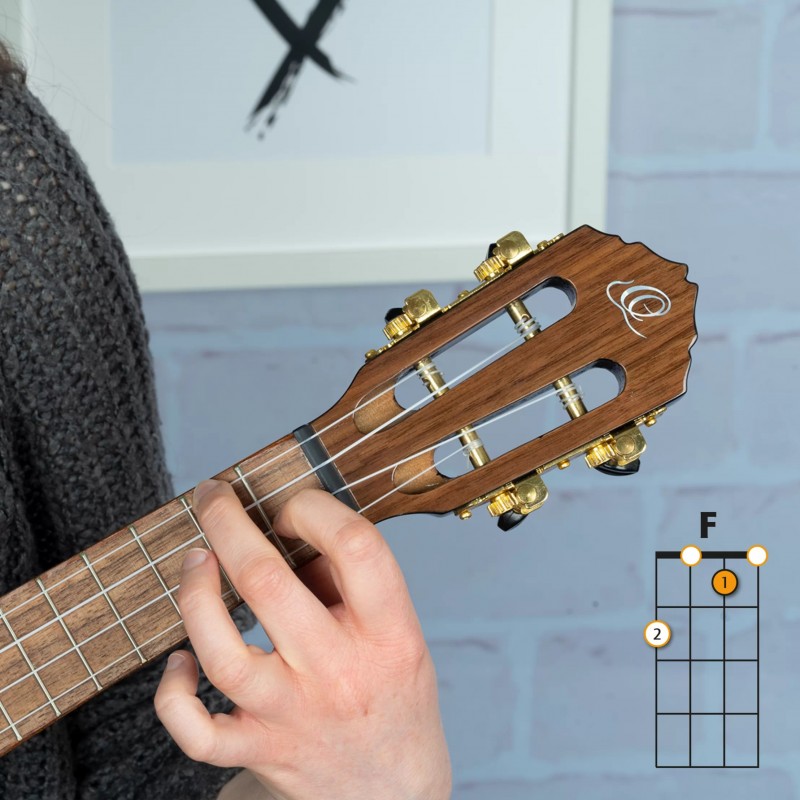
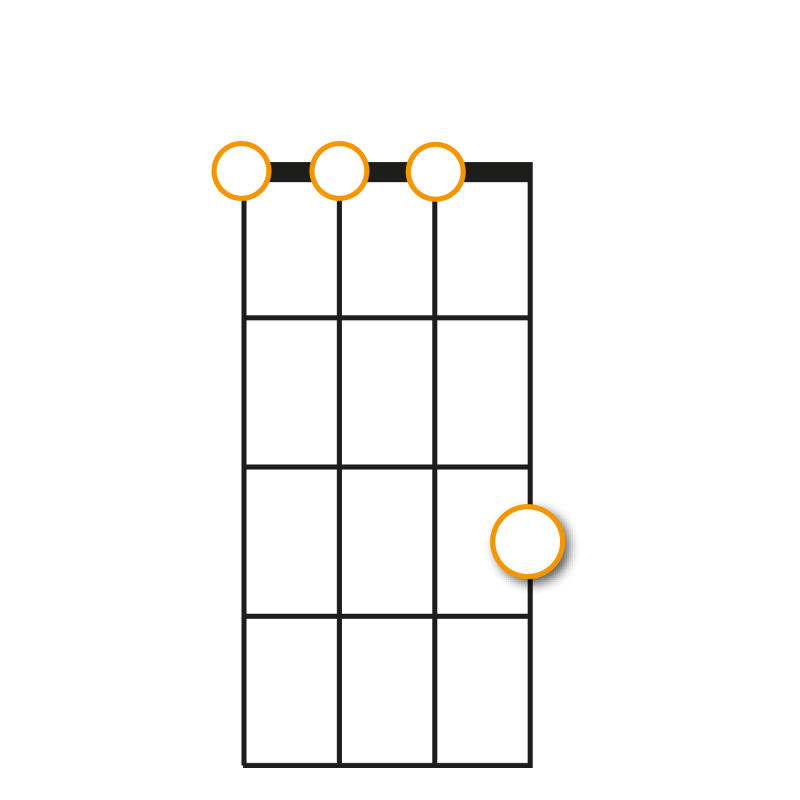
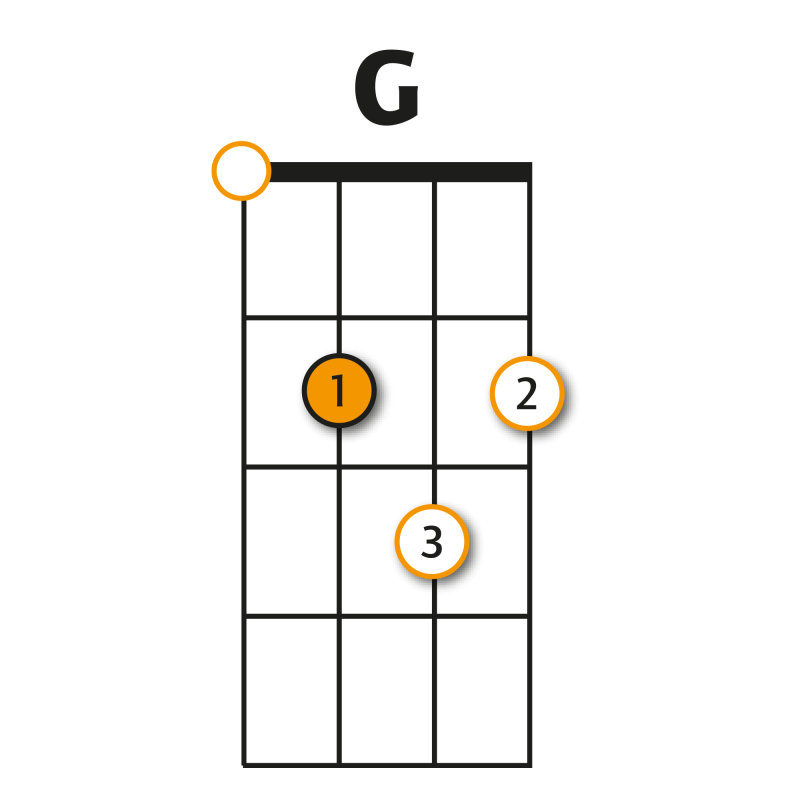
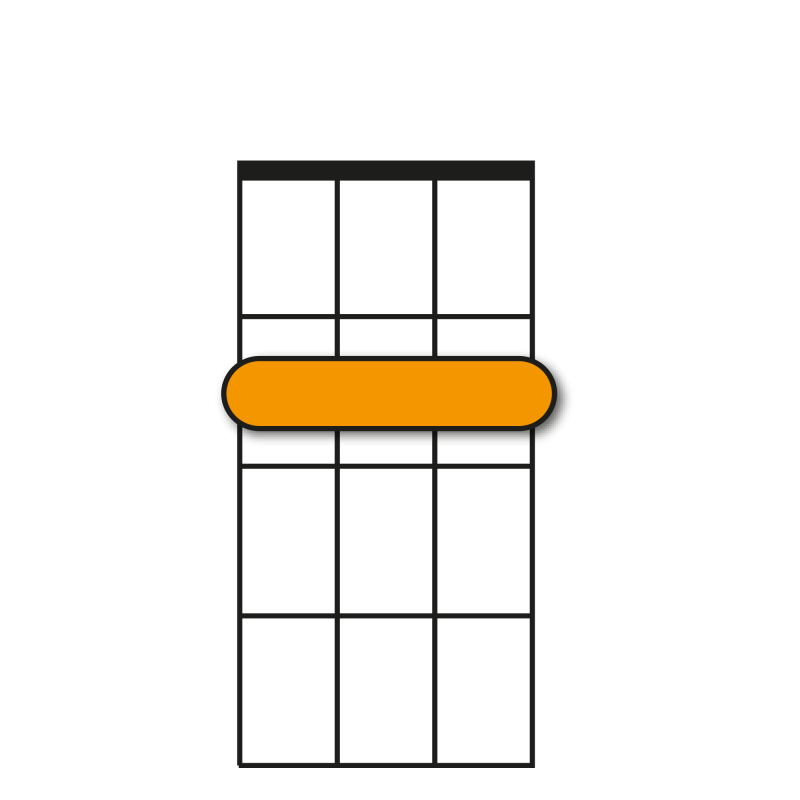
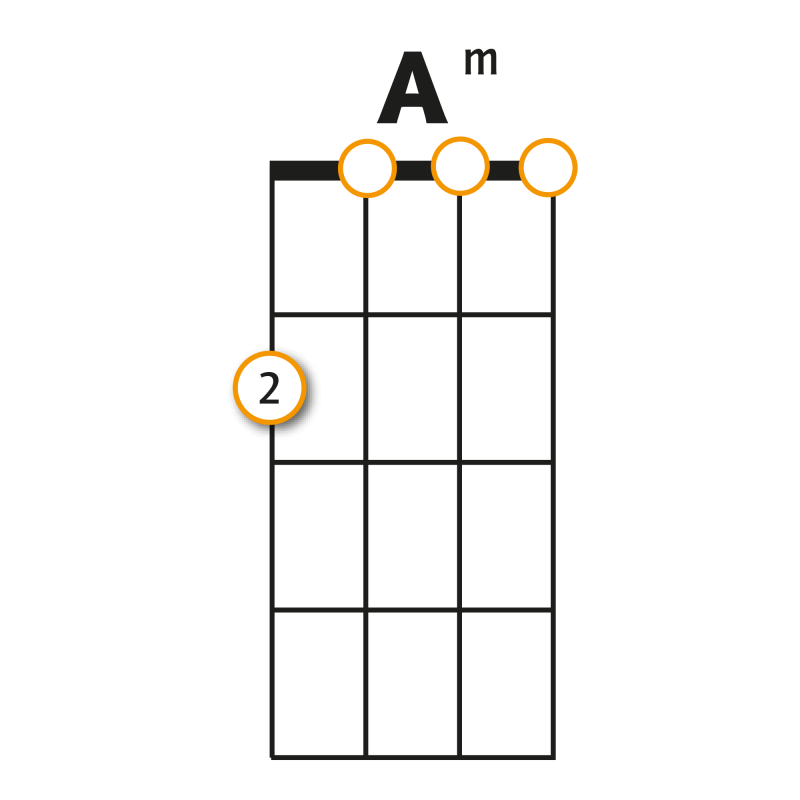
BASIC UKULELE CHORDS
FOR BEGINNERS
If you have always wanted to learn to play music, the ukulele is an excellent instrument to start with. Its small size makes it a convenient instrument to take with you and make music on the go. Thanks to its four strings, learning chords is much easier. You will be able to play your favorite tunes almost immediately. In this article, Ortega Guitars has defined the most basic beginner ukulele chords to learn so you can start right away.
Ukulele chord charts
Ukulele chord charts display four vertical lines, each representing a ukulele string. The ukulele’s topmost string is represented by the first vertical line. Assume you are staring at the fretboard of a ukulele with the headstock on top.
The horizontal lines on the ukulele neck signify the frets. The top horizontal line is thicker to represent the nut of the ukulele. It is the part of the instrument, where the strings come in contact on their way to the headstock and tuners.
Read chord charts: Here is how
Circles
On the chord charts, you can also find circles on the lines. If the string has a dot on it, this means it should be pressed down to the fretboard with a finger. Pressing down the strings is also called fretting. Some chords may have an empty circle at the top of some strings, indicating that they should be played without fretting.
Numbers
Chord charts additionally include numbers inside the dots to indicate which finger should be used. The index finger is represented by 1, the middle finger is represented by 2, the ring finger is represented by 3, and the pinky finger is represented by 4.
Solid line
A solid line going across a fret from the initial note of a chord to its last note indicates barre chords, which are chords that are fretted with one finger at a time. The barre chord goes over all four strings of the ukulele and is played with only one finger, as already mentioned.
Minor chords
For minor chords, the lowercase m is shown on the chord chart. For example, the chord Am is in the key of A minor. All other chords without the lowercase m are major chords.
The I–V–vi–IV progression
I–V–vi–IV is a frequent chord progression seen in a variety of musical genres. It consists of the I, V, vi, and IV chords of any musical scale. In the key of C major, this sequence is C–G–Am–F. With these four chords, you can play an innumerable number of popular songs.
Ortega Guitars and Meinlshop wish you a lot of fun while learning and trying out!

Established in 1994, Ortega Guitars introduced German design to authentic and traditional methods of guitar making. Committed to innovation and quality, Ortega strives to improve what is expected at every level of all their acoustic instruments.
Options like the 12hole bridge, often found only on high-end guitars, are standard on Ortega entry level to professional nylon string guitars. Their wide variety of body an neck sizes accomodates all ages giving everyone an opportunity to learn and play. In addition, they have released one of the widest selection of instruments specifically designed for the wide variety of left-handed players in 2020.











